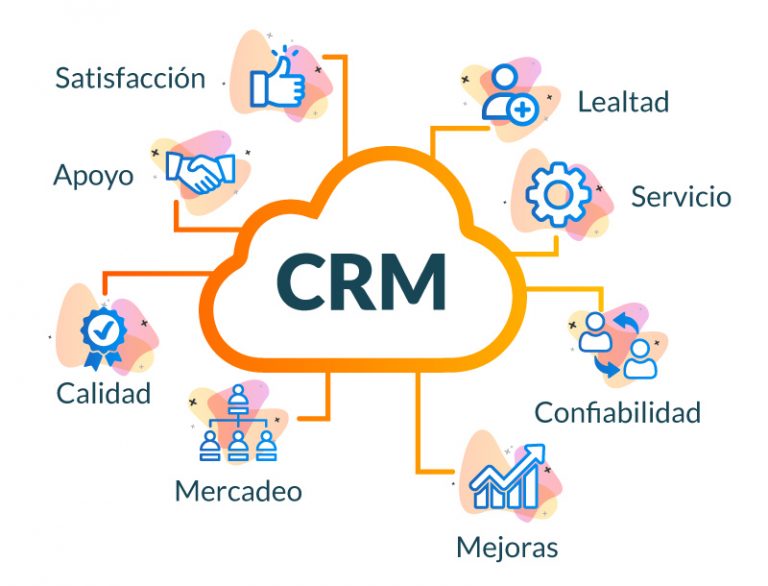![]()
Unlocking Growth: A Comprehensive Guide to CRM Marketing Performance Tracking
In today’s fast-paced business environment, understanding and optimizing marketing efforts is no longer optional; it’s a necessity. The linchpin of this understanding lies in robust CRM (Customer Relationship Management) marketing performance tracking. This comprehensive guide delves deep into the world of CRM marketing, providing you with the knowledge and tools to not only track your performance but also to leverage it for exponential growth. We’ll explore the ‘why’ and ‘how’ of CRM marketing, the essential metrics, the best practices, and the technologies that will empower you to make data-driven decisions and achieve your marketing goals.
What is CRM Marketing and Why is Performance Tracking Crucial?
Before we plunge into the specifics of tracking, it’s essential to establish a solid foundation. CRM marketing is the strategic use of a CRM system to manage and analyze customer interactions and data throughout the customer lifecycle. This approach enables businesses to personalize marketing efforts, improve customer relationships, and ultimately, drive revenue. Performance tracking is the backbone of effective CRM marketing. It involves the systematic collection, analysis, and interpretation of data related to your marketing activities within the CRM system.
Why is it so crucial? Because you can’t improve what you don’t measure. Without tracking, your marketing efforts are akin to shooting arrows in the dark. You might get lucky and hit the target, but you won’t know why or how to replicate that success consistently. CRM marketing performance tracking allows you to:
- Identify What Works: Pinpoint the most effective marketing campaigns, channels, and strategies.
- Optimize ROI: Maximize your return on investment by allocating resources to high-performing activities and eliminating underperforming ones.
- Personalize Customer Experiences: Understand customer behavior and preferences to deliver targeted and relevant marketing messages.
- Improve Customer Retention: Identify at-risk customers and proactively engage them to prevent churn.
- Make Data-Driven Decisions: Base your marketing strategies on concrete data rather than guesswork.
Essential CRM Marketing Performance Metrics to Track
The landscape of CRM marketing metrics is vast, but focusing on the right ones is key to success. Here are some of the most important metrics to track, grouped for clarity:
1. Lead Generation Metrics
- Number of Leads Generated: The total number of new leads captured through your marketing efforts.
- Lead Source: Track where your leads are coming from (e.g., website, social media, email campaigns, referrals).
- Cost Per Lead (CPL): The amount you spend to acquire each lead.
- Lead Conversion Rate: The percentage of leads that convert into qualified prospects.
- Lead Qualification Rate: The percentage of leads that meet your criteria for being a good fit.
2. Sales Performance Metrics
- Sales Conversion Rate: The percentage of qualified leads that convert into paying customers.
- Sales Cycle Length: The average time it takes to convert a lead into a customer.
- Average Deal Size: The average revenue generated per sale.
- Revenue Per Salesperson: The revenue generated by each member of your sales team.
- Customer Acquisition Cost (CAC): The total cost of acquiring a new customer.
3. Customer Engagement Metrics
- Customer Lifetime Value (CLTV): The predicted revenue a customer will generate throughout their relationship with your company.
- Customer Retention Rate: The percentage of customers who remain active over a specific period.
- Customer Churn Rate: The percentage of customers who stop doing business with you.
- Website Engagement: Track metrics like bounce rate, time on page, and pages per session to understand customer interest.
- Email Open and Click-Through Rates: Measure the effectiveness of your email marketing campaigns.
4. Marketing Campaign Metrics
- Campaign ROI: The return on investment for each marketing campaign.
- Click-Through Rate (CTR): The percentage of people who click on a link in your campaign.
- Conversion Rate: The percentage of people who complete a desired action (e.g., making a purchase) after interacting with your campaign.
- Cost Per Conversion: The cost of each successful conversion.
- Social Media Engagement: Track likes, shares, comments, and other engagement metrics on social media platforms.
Setting Up Your CRM for Performance Tracking
The effectiveness of your CRM marketing performance tracking depends heavily on how you set up your CRM system. Here’s a step-by-step guide:
1. Choose the Right CRM Platform
Selecting the right CRM platform is the first and arguably most critical step. Consider these factors when choosing a platform:
- Functionality: Does the platform offer the features you need, such as lead management, sales automation, marketing automation, and reporting?
- Scalability: Can the platform handle your current and future needs as your business grows?
- Integration: Does the platform integrate with your other marketing tools (e.g., email marketing platforms, social media platforms, website analytics)?
- Ease of Use: Is the platform user-friendly and easy to navigate?
- Cost: What is the pricing model, and does it fit within your budget?
- Reporting and Analytics: Does the platform offer robust reporting and analytics capabilities?
Popular CRM platforms include Salesforce, HubSpot, Zoho CRM, Microsoft Dynamics 365, and Pipedrive. Research and compare platforms to find the best fit for your specific business needs.
2. Define Your Goals and KPIs
Before you start tracking, clearly define your marketing goals and the Key Performance Indicators (KPIs) that will measure your progress. What do you want to achieve with your CRM marketing efforts? Examples include:
- Increasing lead generation.
- Improving sales conversion rates.
- Boosting customer retention.
- Growing customer lifetime value.
- Reducing customer acquisition cost.
Once you’ve defined your goals, identify the specific KPIs that align with those goals. For example, if your goal is to increase lead generation, your KPIs might include the number of leads generated, lead conversion rate, and cost per lead.
3. Customize Your CRM
Tailor your CRM system to meet your specific business requirements. This may involve:
- Custom Fields: Add custom fields to capture the data that is important to your business (e.g., industry, company size, lead source).
- Workflows and Automations: Set up workflows and automations to streamline your marketing and sales processes.
- Reporting Dashboards: Create custom dashboards to visualize your KPIs and track your progress.
- Integrations: Integrate your CRM with your other marketing tools to centralize your data and automate data transfer.
4. Implement Data Collection and Tracking
Ensure that your CRM system is capturing the necessary data to track your KPIs. This includes:
- Lead Source Tracking: Implement tracking mechanisms to identify the sources of your leads (e.g., website forms, social media campaigns, email campaigns).
- Website Tracking: Integrate your CRM with your website analytics to track website activity and customer behavior.
- Email Tracking: Track email opens, clicks, and conversions using email marketing integration.
- Sales Data Tracking: Ensure that sales data is accurately entered into your CRM system, including deal size, sales cycle length, and conversion rates.
5. Regularly Analyze and Report on Your Data
Make data analysis a regular part of your marketing routine. Review your reports and dashboards to identify trends, patterns, and areas for improvement. Use this data to make informed decisions and adjust your marketing strategies as needed. Set up automated reports to track key metrics regularly.
Best Practices for CRM Marketing Performance Tracking
Effective CRM marketing performance tracking goes beyond simply collecting data. It involves adopting best practices that will help you maximize the value of your data and achieve your marketing goals.
1. Focus on Actionable Metrics
While it’s tempting to track every metric imaginable, it’s more effective to focus on the metrics that are most relevant to your goals and that you can take action on. Choose metrics that provide meaningful insights and that can be used to improve your marketing performance. Avoid vanity metrics that might look good but don’t contribute to your bottom line.
2. Segment Your Data
Segmenting your customer data allows you to analyze your marketing performance more effectively. By segmenting your data, you can identify trends and patterns among specific customer groups and tailor your marketing efforts accordingly. Examples of data segmentation include:
- Customer Demographics: Age, gender, location, income.
- Customer Behavior: Purchase history, website activity, email engagement.
- Lead Source: Where your leads came from.
- Customer Lifecycle Stage: Lead, prospect, customer, advocate.
3. Automate Where Possible
Automation can save you time and improve the accuracy of your data. Automate data collection, reporting, and analysis whenever possible. Most CRM platforms offer automation capabilities that can streamline your workflows and reduce manual effort.
4. Integrate Your CRM with Other Tools
Integrate your CRM with other marketing tools to create a centralized view of your customer data and automate data transfer. This can include:
- Email Marketing Platforms: Synchronize your email campaigns with your CRM to track email opens, clicks, and conversions.
- Social Media Platforms: Integrate your CRM with social media platforms to track social media engagement and identify social media leads.
- Website Analytics: Integrate your CRM with your website analytics to track website activity and customer behavior.
- Marketing Automation Platforms: Integrate your CRM with marketing automation platforms to automate your marketing campaigns and personalize customer experiences.
5. Regularly Review and Refine Your Tracking
CRM marketing is not a set-it-and-forget-it endeavor. Regularly review your tracking methods and make adjustments as needed. As your business and marketing strategies evolve, your tracking needs will also change. Be prepared to adapt your tracking approach to ensure that you are capturing the most relevant and actionable data.
6. Train Your Team
Ensure that your team is properly trained on how to use your CRM system and how to track marketing performance. Provide training on data entry, reporting, and analysis. This will help ensure that your data is accurate and that your team is able to make informed decisions based on the data. Foster a data-driven culture within your team.
7. Establish Clear Reporting Cadence
Set up a regular reporting cadence to ensure that you are consistently monitoring your marketing performance. This could include weekly, monthly, or quarterly reports. Share the reports with your team and stakeholders to keep everyone informed and aligned on your progress. Use the reports to discuss results, identify challenges, and make strategic adjustments.
Leveraging CRM Data for Marketing Optimization
The ultimate goal of CRM marketing performance tracking is to optimize your marketing efforts and drive business growth. Here’s how to leverage your CRM data to improve your marketing outcomes:
1. Identify High-Performing Campaigns and Channels
Use your CRM data to identify the marketing campaigns and channels that are generating the best results. Analyze metrics like lead generation, conversion rates, and ROI to determine which campaigns are most effective. Allocate more resources to high-performing campaigns and channels and consider scaling them up.
2. Personalize Customer Experiences
Use your CRM data to personalize your marketing messages and customer experiences. Understand your customers’ preferences, behaviors, and purchase history to deliver relevant and targeted content. This can include:
- Personalized Email Marketing: Send targeted email campaigns based on customer segmentation.
- Dynamic Website Content: Display personalized content on your website based on customer behavior.
- Targeted Advertising: Run targeted advertising campaigns on social media and other platforms.
3. Improve Lead Scoring and Qualification
Use your CRM data to improve your lead scoring and qualification process. Identify the characteristics of your best customers and use this information to score and qualify new leads. This will help you prioritize your sales efforts and focus on the leads that are most likely to convert.
4. Optimize Sales Processes
Analyze your CRM data to identify areas for improvement in your sales processes. Track metrics like sales cycle length, conversion rates, and average deal size to identify bottlenecks and inefficiencies. Use this data to optimize your sales processes and improve your sales team’s performance.
5. Reduce Customer Churn
Use your CRM data to identify at-risk customers and proactively engage them to prevent churn. Monitor customer behavior, such as purchase history, website activity, and customer service interactions, to identify customers who may be at risk of churning. Reach out to these customers with personalized offers and support to re-engage them.
6. Improve Customer Lifetime Value
Focus on strategies to increase customer lifetime value (CLTV). This can be achieved by increasing customer retention, upselling and cross-selling, and driving repeat purchases. Use your CRM data to understand customer behavior and tailor your marketing efforts to encourage long-term customer relationships.
Tools and Technologies for CRM Marketing Performance Tracking
Several tools and technologies can assist you in your CRM marketing performance tracking efforts. Here are some of the most popular:
- CRM Platforms: As mentioned earlier, CRM platforms are the central hub for your customer data and marketing activities.
- Marketing Automation Platforms: These platforms automate your marketing campaigns, personalize customer experiences, and track marketing performance. Examples include HubSpot, Marketo, and Pardot.
- Email Marketing Platforms: These platforms allow you to create and send email campaigns, track email opens, clicks, and conversions. Examples include Mailchimp, Constant Contact, and Sendinblue.
- Website Analytics Tools: These tools track website activity and customer behavior. Examples include Google Analytics, Adobe Analytics, and Matomo.
- Social Media Analytics Tools: These tools track social media engagement and identify social media leads. Examples include Hootsuite, Sprout Social, and Buffer.
- Reporting and Dashboarding Tools: These tools allow you to create custom reports and dashboards to visualize your marketing performance. Examples include Tableau, Power BI, and Klipfolio.
The Future of CRM Marketing Performance Tracking
The field of CRM marketing performance tracking is constantly evolving. Here are some trends to watch:
- Artificial Intelligence (AI) and Machine Learning (ML): AI and ML are being used to automate data analysis, personalize customer experiences, and predict customer behavior.
- Predictive Analytics: Predictive analytics is being used to forecast future trends and customer behavior.
- Data Privacy and Security: Data privacy and security are becoming increasingly important, and businesses need to ensure that they are compliant with all relevant regulations.
- Integration of Online and Offline Data: Businesses are increasingly integrating online and offline data to create a holistic view of their customers.
Conclusion
CRM marketing performance tracking is a critical element of any successful marketing strategy. By tracking the right metrics, adopting best practices, and leveraging your data, you can optimize your marketing efforts, improve customer relationships, and drive business growth. Embrace the power of data, stay informed about the latest trends, and continuously refine your approach to stay ahead of the competition. The journey to unlocking growth through CRM marketing performance tracking is ongoing, but the rewards are well worth the effort.




